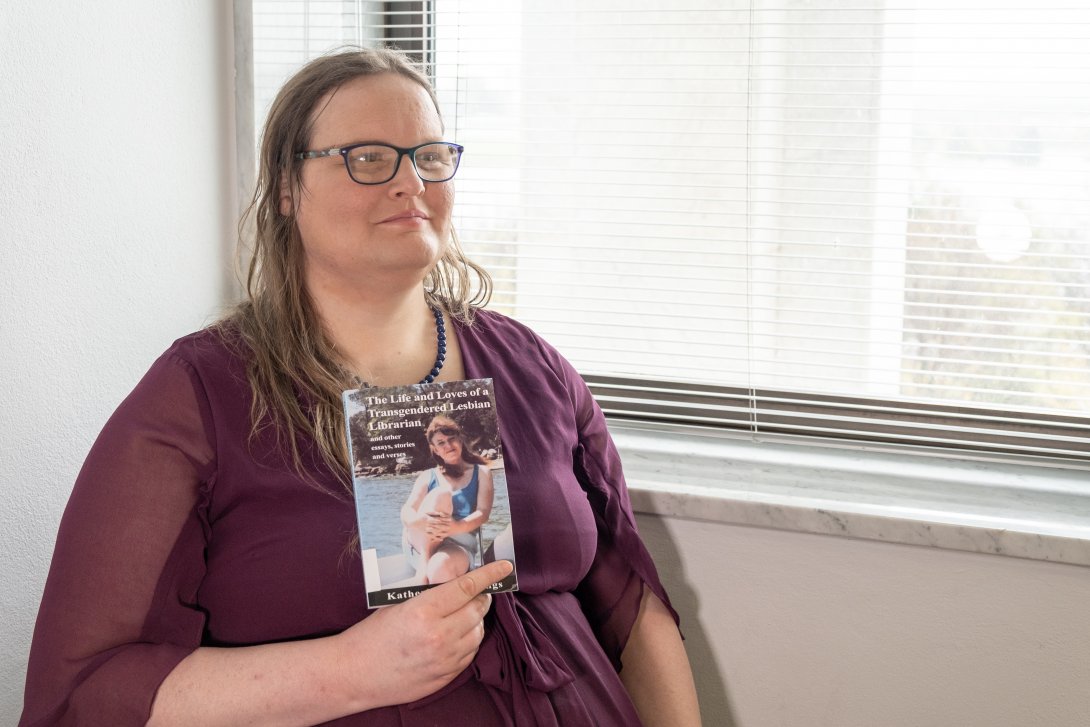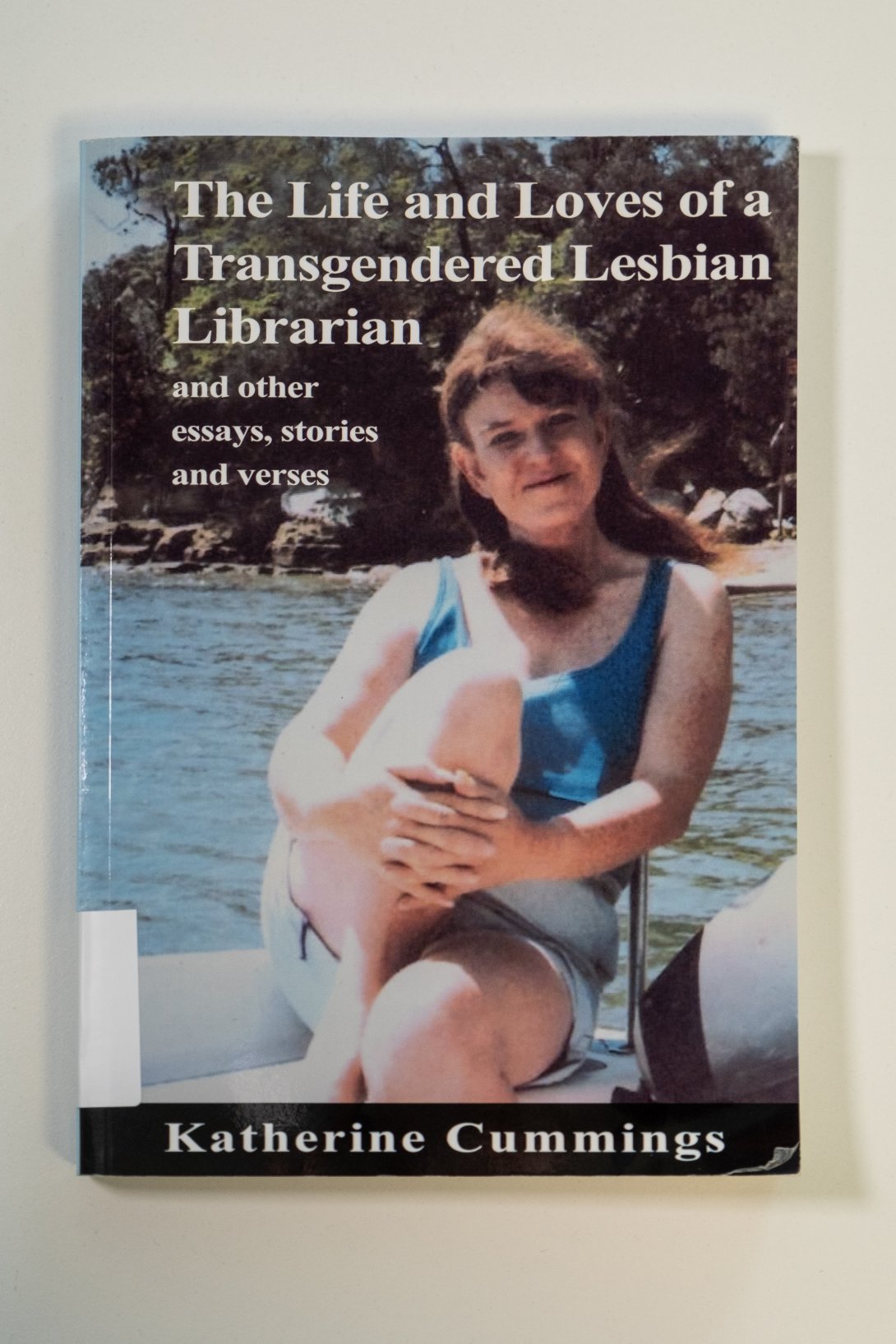The National Library and Trove hold an incredible volume of resources on LGBTQIA+ identities and communities. These resources can sometimes be difficult to find – but one librarian has set out to change that.
Anne Rowlands is a library officer at the National Library of Australia. She’s also a proud transgender woman who is passionate about improving the representation of LGBTQIA+ history and records in national collections. She has created publicly accessible lists of over 5000 transgender and intersex related resources in a bid to help remove barriers to access for people looking for information about their community.
In this interview, Anne discusses the impetus for the project, the challenges she faced, and why improving access and representation is important.

Tell us about the project.
Basically, it’s a list of transgender related publications – mostly published material. It started as a collection development project, but it was also about scoping out what we have in the Library – what’s actually out there, what’s been published, and just a general idea of how much material there is published about transgender people. That’s pretty much what it’s about.
I also worked on a list of intersex related publications as part of the same project. They’re related but obviously not identical identities. Intersex people are different to transgender people. I don’t have lived experience as an intersex person – somebody who does have that lived experience would have more in-depth knowledge and personal knowledge than I do about that.
Some intersex people have asked me to add certain material to it and I’ve done the best I can to do that and reflect what they’ve contributed. A lot of the stuff that’s about intersex people is in journal articles and not necessarily whole journals and whole books. There are some books about intersex people and publications about them and by them, but the area is just unfortunately not as well-published outside of the medical sphere. There’s a variety of reasons why that is.
Why did you choose to present your research as a Trove list?
Originally, my work was part of the collection development project, so it was about finding the material and identifying what gaps we had in our collection. I proposed we make it into a Trove list at some point during the project so that other people could find the material. One of the things that inspired me to become a librarian was that I really hate it when I can’t find the information that I’m after. I know other people have that sort of anxiety too, especially when it’s about something that’s quite important to them, and having this list there and ready makes it so much easier.
What kind of challenges did you encounter during this project?
There has been a cultural change when it comes to transgender and LGBTQIA+ people in general. So that has meant that the terminology has changed a lot since... as far back as publications go. Most recent publications will say transgender, or they’ll say some other identity that might be considered to be under the transgender umbrella – similar identities that people consider to fit under the umbrella, but not necessarily the same as being transgender.
There’s been identities in the past all throughout history which have been outside of what is considered male or female. There have been identities outside of the binary that existed in cultures for all sorts of reasons. There are two other terms that have existed over the last hundred years or so – one is transvestite, and the other is transsexual. Both of these are now considered archaic, but they are still terms that are easily findable in the catalogue, in Trove, in archives. Sometimes you’ll get people who refer to transgender people using those words. And there are some transgender people who identify with them, because that’s what they were told they were when they came out, back in the sixties and seventies.
When I started this project, I knew that I would be seeing things that were calling transgender people and genderqueer people words and terms that aren’t good terms now. There were quite a few newspaper articles added to my list that describe violent acts being conducted against transgender people.
Nowadays there’s a resource called Homosaurus which is basically a thesaurus that’s been created by queer people. It’s full of all these different identities and terms that exist within the queer community.
Did you find anything that surprised you, or that you found really interesting?
There was a term called ‘travesti’ which was applied to people who used gender in a way to get money. It was a term used by dancers and singers who would change gender for their role in a play or a performance, somewhat like drag.
The travesti dancers were quite interesting, and there were actually some Australian troops too – dance troops and performance troops. I haven’t been able to find a huge amount of information. It’s well buried.
Do you have a favourite item from the collection?
One of my favourite items I’ve found from this project is The life and loves of a transgendered lesbian librarian by Katherine Cummings. She is a famous transgender person who is also obviously a librarian and a lesbian, which reflects a lot of what I am. I don’t agree with everything that she says in the book, but there’s a lot in there that’s reflective of the sort of life you have to live as a transgender person and the sort of things you have to go through.

Katherine Cummings was a librarian, but she also had a radio series called Katherine’s Diary on ABC Radio National for a couple of years. She won a human rights award for non-fiction. At the point that she wrote this book, she was an information resource worker for the Gender Centre in Sydney and she edited the magazine that they produced called Polare.
How important is it to see your own identity represented in the collection?
It’s vital, I suppose, is the best way of putting it. For someone who is just coming to terms with their identity, or even just questioning their identity, being able to find that sort of information quickly and easily makes life a lot easier. Because it means that they can see that they’re not the only one who’s had this experience. Just knowing that transgender people exist can be really important.
Explore transgender and intersex related materials on Trove
-
Transgender related materials (1000 items)
-
Transgender related materials 2 (1000 items)
-
Transgender related materials 3 (1000 items)
-
Transgender related materials 4 (1000 items)
-
Transgender related materials 5 (399 items)
-
Intersex related materials (639 items)
How to use Trove lists
Trove’s list feature is a way to collection records, articles and webpages on a given topic and share them with others. Store and organise your favourite items; share and connect with like-minded community members; and improve access to the material that matters most to you. Lists can be made private, public and collaborative. Anyone can create a Trove list – just sign up for a Trove account to join the Trove community and get started. Find out more about how to use Trove lists.
The month of June is globally recognised as Pride month. An event that began in the United States to honour the history of the Stonewall riots, Pride has become a worldwide movement that celebrates and commemorates the lives and journeys of lesbian, gay, bisexual, transgender, queer, intersex and asexual (LGBTQIA+) people. Find out more about the history of Pride.